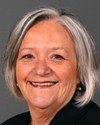Yes, I'd be glad to.
The jurisdiction decision as to which level of government is responsible for the regulation of a private pension plan depends, in the first instance, on what sector the employer is in. Certain sectors fall under federal jurisdiction, and then failing that, if it doesn't fall under federal jurisdiction, it depends on the location of the employer. Some employers have multiple locations, but I think there's a well-worked-out system as to who's in charge, and indeed the jurisdiction can, at times, be shared across certain provinces.
One aspect of the reforms that the Minister of Finance is proposing, which would have implications across the board for private pension plans, is a change to the tax treatment of the contributions that employers make to the funding of their pension plans. That's an Income Tax Act change that will be broadly applicable.
Other than that, the changes that were proposed by the minister would, in the first instance, only apply to federally regulated plans. That said, we do have a working group of federal and provincial officials on pensions. We share ideas. A number of provinces have gone through consultative processes similar to the process that the federal government has gone through, and there are reform agendas going forward in some provinces, not in lockstep, but informed by each other's experience.




